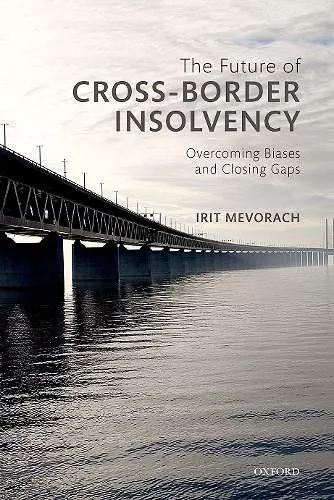The Future of Cross-Border Insolvency
Overcoming Biases and Closing Gaps
Format:Hardback
Publisher:Oxford University Press
Published:8th Mar '18
Currently unavailable, and unfortunately no date known when it will be back

A fresh and insightful guide to post-financial crisis cross-border insolvency, this book interrogates the current regime and sets out a framework for improving its future. In recent decades, and especially since the global financial crisis, a number of important initiatives have focused on developing the mechanisms for managing the insolvency of multinational enterprises and financial institutions. The book considers the effectiveness of the current system and identifies the gaps that could be bridged by adopting certain strategies and tools, to improve the system further. The book first discusses the theoretical debate regarding cross-border insolvency and surveys the strengths and weaknesses of the prevailing method-modified universalism in its application to both commercial entities and financial institutions, consequently identifying a single set of emerging norms. The book argues that adhering to these norms more robustly would enhance global welfare and produce the best outcomes for businesses and institutions. By drawing upon sources from international law as well as behavioural and economic theory, the book offers a blueprint for meeting the demands of future cross-border insolvencies. It considers how to translate modified universalism into binding international law and how to choose the right instrument for cross-border insolvency as well as the impact that instrument design has on decisions and choices. It explores how to encourage compliance and proposes mechanisms that could potentially overcome, or at least take into account, behavioural biases in decision-making.
This book offers a range of important reflections on the future development of this area of law and the analysis is persuasive. The material is rigorously researched, as is evident from the extensive referencing and numerous examples from cases around the world, and it puts forward some strongly argued and insightful points. ... This is a book that gives optimism for the future development of scholarship in this area of law. * Rebecca Parry, Banking & Finance Law Review *
The book is essential reading for all interested in the on-going development of a solid cross-border insolvency system. It is not only of importance for academics and researchers. It is an original and topical presentation of a way to get the glass filled better than half and should be read and discussed by legislators (mostly working in territorial isolation) to conceptualise what is needed to assess and improve the structure of its existing cross-border insolvency framework. * Prof. Dr. Bob Wessels *
The book is of interest to academics and researchers, as well as to anyone who has a true interest in investigating the structure of the existing cross-border insolvency framework and in questioning its adequacy for the new challenges of the 21st century. Law libraries and research institutions will be interested in adding a work of this kind to their collection, for the originality and the topical nature of the issues investigated herein. * Eugenio Vaccari, International Company and Commercial Law Review *
this text is well-written and the argument well-supported by an enviable range of resources drawn from a range of subjects and disciplines. It can be recommended to those seeking a fresh approach towards understanding this challenging area of law and practice. * Paul J. Omar, Eurofenix *
ISBN: 9780198782896
Dimensions: 239mm x 164mm x 24mm
Weight: 638g
316 pages